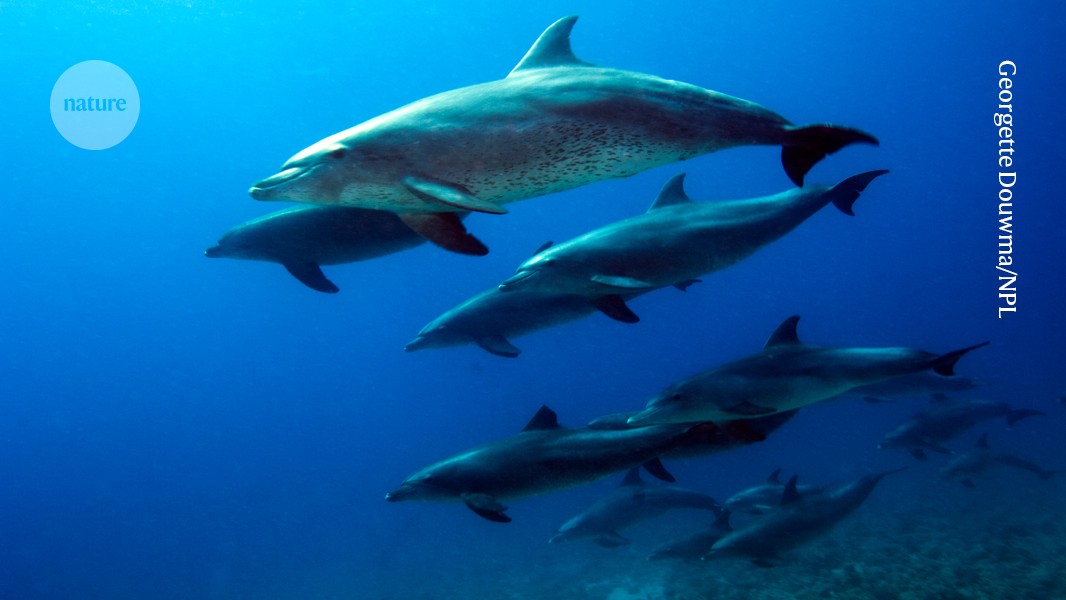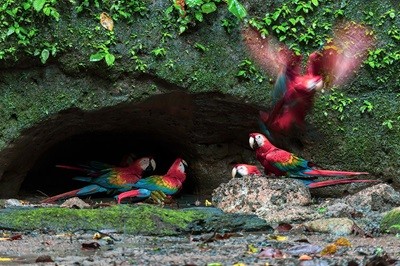
Bottlenose dolphins’ whistles will be analysed using artificial intelligence.Credit: Georgette Douwma/Nature Picture Library
Will artificial intelligence (AI) finally allow us to talk to animals? To spur progress towards that dream, a contest is offering a US$500,000 cash prize for AI use that achieves a “breakthrough” in interspecies communication, as well as an annual award of US$100,000 until the grand prize is claimed.
The first annual prize in the contest, the Coller Dolittle Challenge, was awarded yesterday to researchers who are planning to apply AI to some four decades’ worth of recordings of bottlenose dolphins (Tursiops truncatus). The team has already identified more than 20 distinct sounds in the dolphin ‘vocabulary’1 and plans to incorporate AI classification methods to expand this lexicon.
The contest, which launched a year ago, is organized by the Jeremy Coller Foundation in London — which funds projects related to animal welfare, among other things — in partnership with Tel Aviv University in Israel. Annual prizes will be awarded for research that uses AI to improve scientists’ understanding of how animals communicate. But “the ultimate goal is indeed what we call two-way, multi-context communication with an animal using the animal’s own signals”, says Yossi Yovel, a neuroecologist at Tel Aviv University and chair of the award’s scientific committee.
The grand prize is worth either $500,000 in cash or $10 million in investments; the qualifying criteria will be established in the next year or so, Yovel says.
Sorting whistles and howls
AI has boosted researchers’ ability to process large amounts of animal-communication data, such as recordings of bird whistles or wolf howls. The technology has also made it easier for scientists to look for patterns that hint at the meaning of animal sounds, says Yovel. Together with advances in AI for human communication, this has fuelled interest in using AI tools to decode animal communication. But researchers say they have yet to see an AI-based revolution in the field.
“You still need a lot of zoological know-how. Thinking that you can just put a camera somewhere, record an animal and automatically detect something — the chances for this being useful are very low,” says Yovel.
There’s been a lot of hype about applying large language models to animal communication systems, says Arik Kershenbaum, a zoologist at the University of Cambridge, UK, who is not involved in the contest. That approach hasn’t yet been proved, but contest organizers are optimistic that AI can improve two-way communication between humans and animals.
What’s in a name?
Laela Sayigh, a biologist at the Woods Hole Oceanographic Institution in Massachusetts, and her team have been studying a community of some 170 bottlenose dolphins in Sarasota Bay, Florida, for decades.
Since 1984, they have been recording sounds from individual dolphins by attaching suction-cup microphones to the animals. This has allowed the team, which won this year’s prize, to catalogue most of the dolphins’ “signature whistles” — sounds that function like names and help individuals to identify one another.
How AI can help to save endangered species
About half of the whistles produced by dolphins are of this type, Sayigh says. The other half, called non-signature whistles, have received little attention because they are harder to study. “Since we know the signature whistles of most dolphins in the Sarasota community, we had a unique research opportunity,” she says. “We have now identified more than 20 repeated, shared non-signature whistle types.”
By playing back some of these shared whistles and observing the dolphins’ reactions, the scientists are beginning to uncover their meaning. For instance, the dolphins approached speakers playing some sounds, suggesting these functioned as a way of initiating contact, but swam away when the speakers played others, suggesting these functioned as a type of alarm. The researchers plan to continue to expand the database of dolphin vocabulary and to explore what different sounds might mean.



